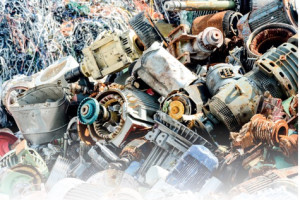Waste not want not
Published: 29 March, 2021
Thomas Marks, AEMT Secretary, looks at how the service and repair sector can help operators of electrical equipment to reduce running costs and their environmental impact at the same time.
Over the past 30-plus years, we have been made more aware of the impact of global warming and the consequences it has on our everyday lives. Corporations and individuals alike have a responsibility to reduce waste and strive to be more efficient with the resources we use. Improving the efficiency of electrical equipment reduces the demand on generation plants, allowing renewable sources to produce a greater proportion of the overall requirement.
Everyone has the capacity to make their contribution in both their professional and personal lives to improve their ecological footprint. For those working with electrically powered equipment in an industrial setting, there is an opportunity to review electrical consumption rates and assess methods of improvement.
The various national and international bodies have encouraged manufacturers of electric motors to develop more efficient designs and at the same time, install legislation that promotes the use of this equipment. However, operators are not compelled to upgrade existing machinery, that is a decision they make for themselves.
Those working in the service and repair sector know all too well the benefits of improved efficiency, not least the effect it can have on operating costs. Today, there is also an opportunity to explain the long-term advantages of reducing energy consumption and the benefits for future generations.
Improving the future
The increasing population of renewable power plants in the UK has meant that in the first quarter of 2020, 47% of the nation’s electricity generation came from renewable sources. Added to that, a new record of more than two months coal-free generation was achieved in June and the signs are that the UK is heading in the right direction.
However, The Committee on Climate Change (CCC) has concluded that the UK will need to quadruple its low-carbon energy generation capacity by 2050, against a 2017 baseline, if it is to meet its long-term net-zero goal. This is due to projected increases in demand and industry makes up a large percentage of that total.
It is, therefore, important that industrial users are offered clear advice on the changes they can make and the benefits that can be gained, both short and long-term. The various solutions available need to be tailored to the application to ensure the opportunities are maximised.
Correct specifications
The use of more efficient motors is the most obvious starting point, but equally important is matching the power output to the application. So often in the past, motors have been overspecified, ‘just in case’, or to account for ageing, loss of efficiency and to be on the safe side.
This flawed thinking means a greater use of resources to manufacture the motor and wasted energy in operating it. It is essential that the initial motor specification process is completed professionally, especially when a replacement component is being installed; like-for-like is rarely an acceptable solution.
At the same time, looking at the bigger picture is essential if the benefits of a highefficiency motor are to be realised. Simply connecting it to an inefficient fan or gearbox, renders the advantages almost to zero. Taking a holistic approach to the complete drivetrain is very important and this will ensure the savings in the future are maximised.
Ultimately, we make our choices based on the information we have available at the time. Those in the service and repair sector have a wealth of knowledge and experience that can be used to the advantage of everyone. By providing operators with more information on new technologies and improvements in control techniques, there is an opportunity for them to make better decisions
********************************************************************************************************
The AEMT
The Association of Electrical and Mechanical Trades (AEMT) was founded in 1945. It is an International Association representing leading companies in the electrical and mechanical service and repair industry. Members manufacture, distribute, install, service, maintain, and repair, electric motors, drives, pumps, fans, gearboxes, generators, transformers, switchgear, and ancillary equipment. In addition to motor and pump service facilities, most members operate mechanical engineering workshops for metal fabrication and the repair and refurbishment of worn components. Others include panel building facilities and some carry out repairs to industrial electronic equipment. Associate Members are companies that supply products and services to Members.
Proceeding the publication of AEMT’s and BEAMA’s jointly produced first code of practice for The Repair and Overhaul of Electrical Equipment for use in Potentially Explosive Atmospheres, which was adopted as the initial IEC 60079-19 international standard. The association has put together a selection of Training modules covering the Theory and Practical nature to ATEX and IECEx equipment repair. The modules are delivered as accredited training courses by expert teams across the globe.
********************************************************************************************************
For more information:
https://twitter.com/AEMT_Updates
https://www.linkedin.com/company/the-association-of-electrical-and-mechanical-trade/
https://www.facebook.com/theaemt







